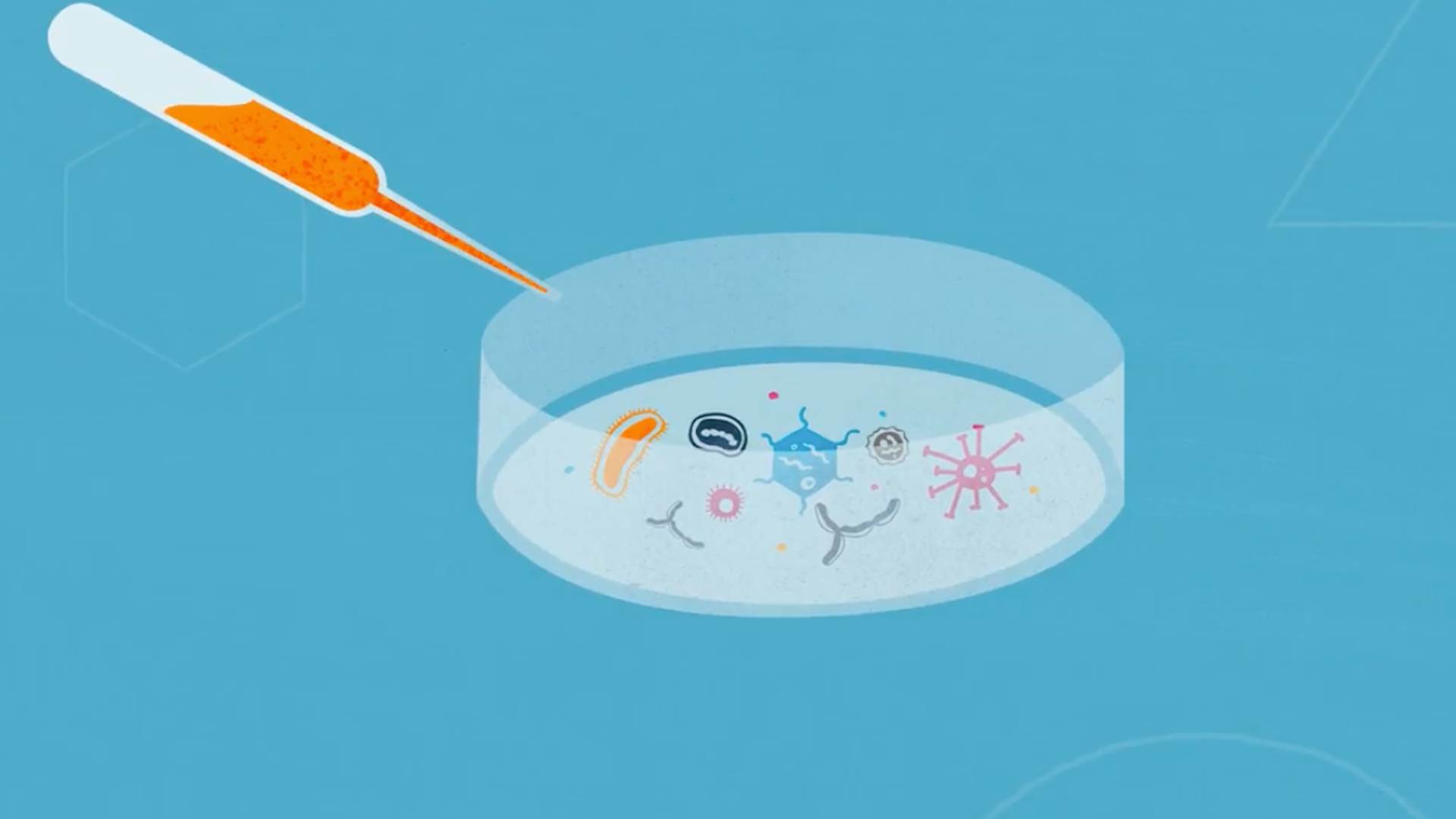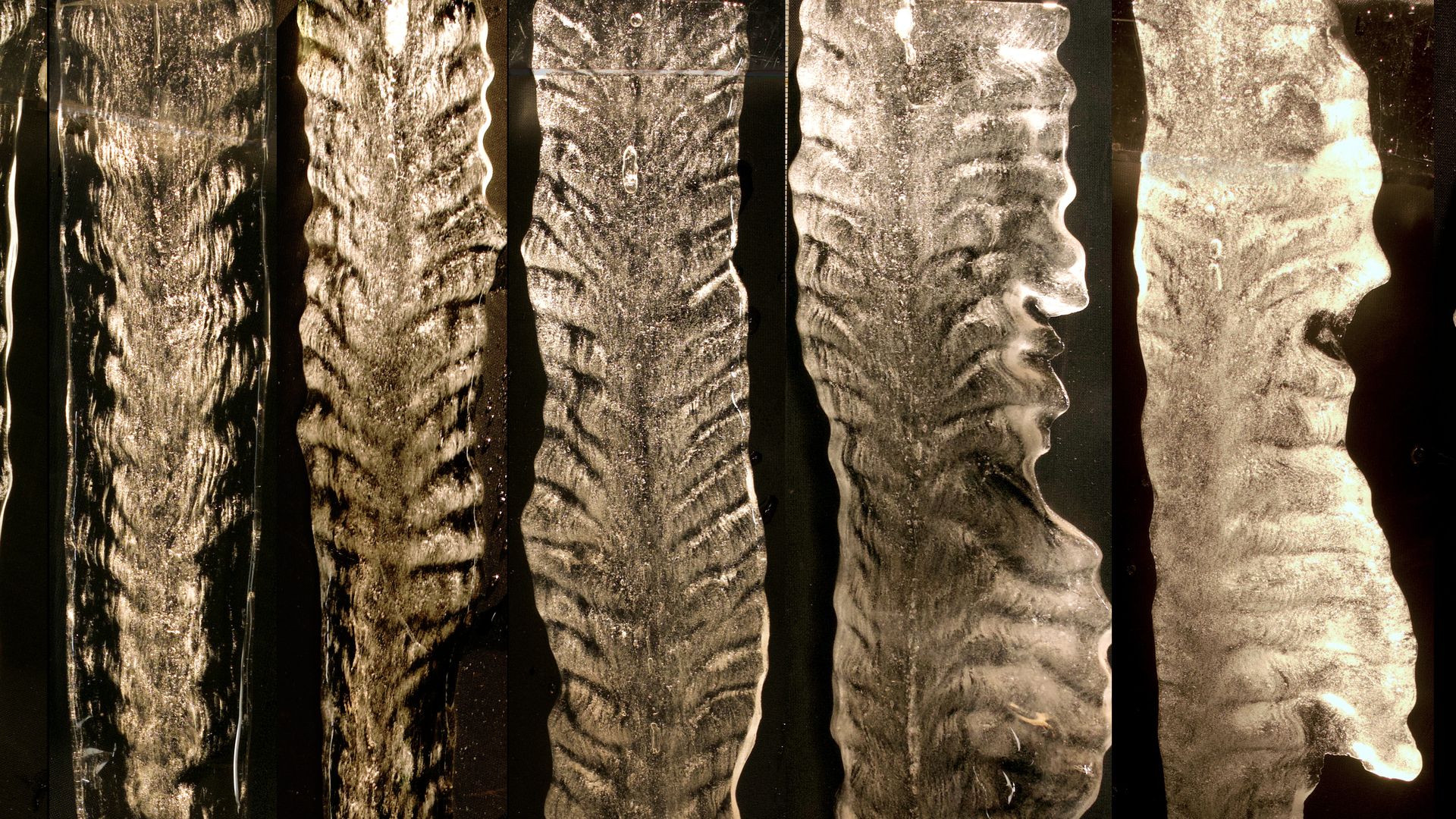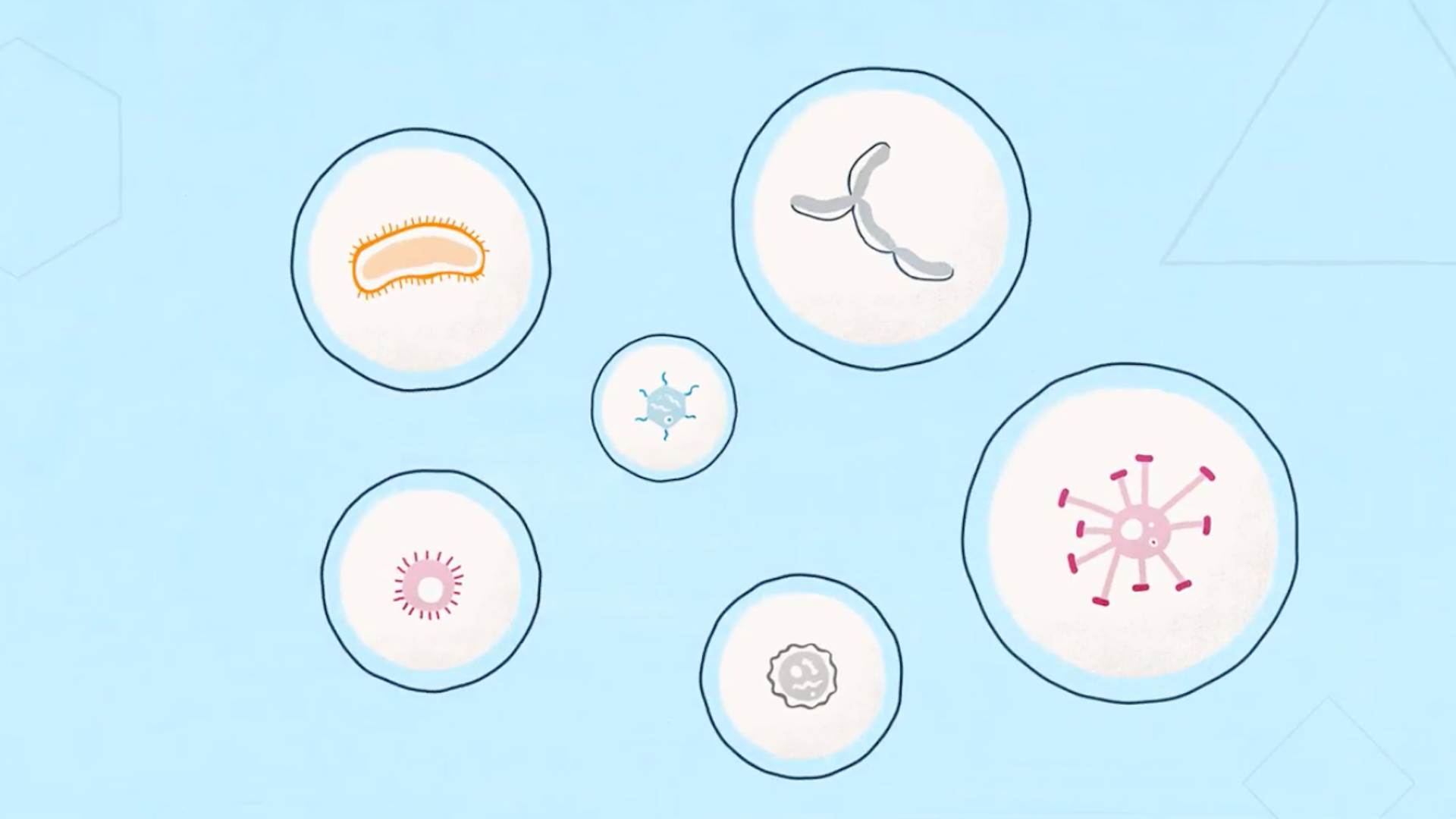| | | | | | | Presented By PhRMA | | | | Axios Science | | By Alison Snyder · Dec 08, 2022 | | Welcome back to Axios Science. This week's newsletter is 1,639 words, about a 6-minute read. | | | | | | 1 big thing: Ancient DNA describes a lush Greenland |  | | | Illustration: Aïda Amer/Axios | | | | Ancient DNA recovered from Greenland's permafrost contains fragments of genetic material from plants, corals, mastodons and other animals that provide details about the warm, lush landscape that once existed there, scientists reported this week. Why it matters: DNA from plants and animals that lived long ago carries records of how organisms responded to climate change in the past and could help scientists understand how they might adapt to current global warming. The big picture: Ancient DNA has been found in marine sediments near Antarctica, a cave in Georgia, an Arctic lakebed and other locations around the world. - But the 2-million-year-old DNA from the polar desert of Greenland is the oldest sequenced so far — and about twice as old as DNA extracted from a mammoth tooth.
Details: Researchers extracted DNA from sediment samples taken from the Kap København Formation in northern Greenland, where fossils discovered earlier indicated a forest existed 2 million years ago. - By comparing the sequences of ancient DNA fragments to those in libraries of DNA from plants, mammals, invertebrates and other organisms, the scientists found 102 genera of plants and animals. (The data resolution isn't fine enough to detect species.)
- These included poplars and pines that no longer grow in Greenland but are found farther south in northern boreal and deciduous forests, according to the paper published this week in the journal Nature.
- They also found fragments of DNA from mastodons, hares and geese as well as horseshoe crabs, corals and other marine organisms that suggested the water in the area was warm.
- Mastodon DNA was a surprise, the researchers said. They are thought to be a much younger species that lived farther south.
What they're saying: "It was super exciting when we recovered the DNA that a very, very different ecosystem appeared," the study's co-author Eske Willerslev of the University of Copenhagen said in a press briefing. How it works: A big challenge for scientists working with ancient DNA is it can degrade over time from shearing, enzymes in microbes or spontaneous chemical reactions. - The researchers found clay minerals could preserve the DNA better than quartz, which dominates the sediment. They said improving their methods for extracting DNA from clay could allow them to go further back in time and to increase the resolution of their findings.
Ancient DNA can also be contaminated with genetic material from organisms that lived much later. - "We can find DNA in any samples we look at, but most of it will be recent contamination or from living organisms such as microbes," Jamie Wood, a paleoecologist at the University of Adelaide, who wasn't involved in the study, said in an email.
- The authenticity of the data in the new study was determined by analyzing patterns of damage, comparing the DNA results with pollen from the same samples and other techniques.
The intrigue: The mixture of Arctic and temperate species isn't found on the planet today, Willerslev said. - The climate though was "very similar to what we expect to face on Earth due to global warming," he added.
- Studying DNA from the environment could provide insights about how to help organisms adapt to climate change, including determining which organisms could live together, as well as breeding and gene editing that could help plants, in particular, survive, he said.
Read the rest. |     | | | | | | 2. Biorisk recommendations |  | | | Illustration: Sarah Grillo/Axios | | | | Researchers outlined recommendations today for strengthening oversight in the U.S. of risky pathogen research. The big picture: A patchwork of policies and organizations oversees and governs different aspects of high-risk biological research in the U.S. and other countries. Some countries have no public policies. - The recommendations come as the U.S. is revising its policies on research that enhances the transmissibility of human pathogens or that can be misused for harm.
- "Whatever that outcome is, we hope it is a catalyst for other governments to review their approach to these issues," says Tom Inglesby of the Center for Health Security at Johns Hopkins Bloomberg School of Public Health and a co-author of the recommendations published today in the journal Science.
Why it matters: Better governance of biorisks would limit the threat of a human-made pandemic — and could help identify the origin of future outbreaks more quickly and with a lot less controversy than that surrounding the origins of the COVID-19 virus, I wrote last year. Driving the news: Ingelsby and his co-authors recommend assessments of the risks and benefits of "dual use research of concern" and pathogen-enhancing research be made public, better guidance be given to scientists and the U.S. Department of Health and Human Services' oversight be expanded to all experiments in these areas, not just the research it funds. - They also recommend oversight be extended to review research that involves enhancing any pathogen's ability to be transmitted between humans, not just highly virulent ones.
- The World Health Organization in September released a framework for countries to assess the safety and security risks related to these types of research.
What's happening: There are 69 BSL-4 labs in operation, under construction or planned in 27 countries, including 12 labs in nine countries that were announced after the start of the COVID-19 pandemic, according to new data from Global Biolabs. BSL-4 labs are used to study dangerous pathogens for which there are no treatments or vaccines. - There are also 55 BSL-3+ labs outfitted with enhanced safety measures that are "increasingly used to conduct research on dangerous pathogens such as the 1918 flu and HPAIs [highly pathogenic avian influenzas]," Gregory Koblentz of the Global Biolabs team said in an email.
- Scoring countries on 41 metrics for biosafety, biosecurity and oversight of dual-use research, Global Biolabs found 21 out of the 27 countries scored high on biosafety governance, 12 scored high on biosecurity governance, and only one country scored high on oversight of dual-use research, he said.
- The new data and a revamped interactive map of global maximum containment labs and biorisk management policies will be discussed at a webinar tomorrow on the sidelines of the Biological Weapons Convention Review Conference.
- Koblentz, who directs the biodefense graduate program at George Mason University, has made similar recommendations for strengthening biosecurity and biosafety. He says there could also be incentives for "performing lower-risk experiments before conducting higher-risk ones."
What to watch: The Office of Science and Technology Policy and the National Security Council are currently reviewing U.S. policies for these types of experiments. |     | | | | | | 3. The solar system's strangest objects unlock its history |  | | | Illustration: Natalie Peeples/Axios | | | | A clutch of upcoming space missions will give scientists unprecedented views of some of the oddest objects in the solar system, Axios' Miriam Kramer writes. Why it matters: The solar system is still a largely mysterious place. Scientists aren't sure exactly how planets came together billions of years ago or how life developed on Earth — and whether it took hold on other worlds. - The strange properties of odd objects could reveal something about our universe that isn't available through more well-studied objects in the solar system.
What's happening: Next year, NASA is sending a robotic mission to Psyche, a largely metal asteroid that is thought to be the leftover core of a long-dead planet that formed early in the solar system's history. - The agency's Dragonfly spacecraft, launching in 2026, will explore Titan — one of Saturn's moons with lakes of liquid methane and dunes of hydrocarbons — to search for signs of life and possibly learn more about where it comes from in the solar system.
- Lucy, a NASA mission on its way to a group of asteroids near Jupiter's orbit, will endeavor to learn more about those space rocks, which are thought to be extremely old and leftover from the dawn of the solar system.
Context: Learning more about the outliers of the solar system has already upended scientists' understanding of how planets in our solar system function and evolve. - When NASA's New Horizons flew by Pluto, it found mountains and plains that forced researchers to re-examine long-held ideas about how a planet cools and what worlds past Neptune may look like.
The intrigue: Understanding outliers not only provides clues about the solar system, but it can also help scientists learn more about worlds and objects far from Earth. Read the entire story. |     | | | | | | A message from PhRMA | | Policymakers: It's time to advance solutions that address AMR | | |  | | | | The use of antibiotics to treat patients with non-confirmed bacterial infections gives bacteria the chance to mutate and resist the drugs made to kill them. The impact: This natural process known as antimicrobial resistance (AMR) ranks as a top 10 global public health threat. Get the facts. | | | | | | 4. Worthy of your time | | How genes drive your dog's lovable and wacky behavior (Ed Cara — Gizmodo) A dangerous stew of air pollution is choking the U.S. (Virginia Gewin — Nature) An ancient Indigenous practice could curtail today's wildfires (Ayurella Horn-Muller — Axios) COVID science is moving backward (Benjamin Mazer — The Atlantic) |     | | | | | | 5. Something wondrous |  | | | A series of icicle cross sections at increasing concentration of salt. In the mid-range concentration, a chevron pattern of fogginess is seen that matches up with the surface ripples. Credit: J. Ladan and S. W. Morris/University of Toronto | | | | The bumpy ripples on some icicles are due to water impurities trapped in the slender ice structures as they form, according to recent research. The big picture: Icicles take shape through a complex process, parts of which still puzzle scientists. Understanding the phenomenon could help to refine models of ice accumulation that can wreak havoc on planes and power lines. - But the scientists' motivation is "pure curiosity about natural patterns," they said in a press release.
Details: Physicists John Ladan and Stephen Morris from the University of Toronto grew icicles in the laboratory from water containing sodium chloride, dextrose or a fluorescent dye. - They found the icicle cores contain inclusions, or "pockets of highly impure liquid trapped inside the ice matrix," they write in the journal Physical Review E. The inclusions are what give some icicles a foggy appearance.
- The inclusions are arranged in chevron-shaped structures that connect to the ripples.
- Earlier work demonstrated that salt impurities led to the formation of ripples. But the new study suggests any impurity at a particular concentration will result in ripples.
One wondrous note: There seem to be universal features of icicle growth: Researchers have found that the wavelength of the ripples is always one centimeter. But, but, but... The researchers say the mechanism underlying how the ripples form is still unknown. - "We get a more profound appreciation for the complexity of natural ice formations," Morris said in the press release.
|     | | | | | | A message from PhRMA | | How to prepare against future public health threats | | |  | | | | Many disease-causing bacteria are constantly adapting to outsmart the medicines used to treat them through a process known as antimicrobial resistance (AMR). The challenge: Our current arsenal of medicines is inadequate to battle increasing rates of AMR. Learn about AMR solutions. | | | | Many thanks to editor Laurin-Whitney Gottbrath, to Aïda Amer on the Axios Visuals team and to copy editor Carolyn DiPaolo. |  | | Are you a fan of this email format? Your essential communications — to staff, clients and other stakeholders — can have the same style. Axios HQ, a powerful platform, will help you do it. | | | | | | Axios thanks our partners for supporting our newsletters. If you're interested in advertising, learn more here.
Sponsorship has no influence on editorial content. Axios, 3100 Clarendon Blvd, Arlington VA 22201 | | | You received this email because you signed up for newsletters from Axios.
Change your preferences or unsubscribe here. | | | Was this email forwarded to you?
Sign up now to get Axios in your inbox. | | | | Follow Axios on social media:    | | | | | |
Post a Comment
0Comments